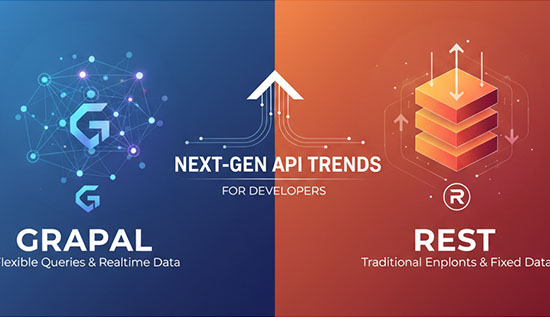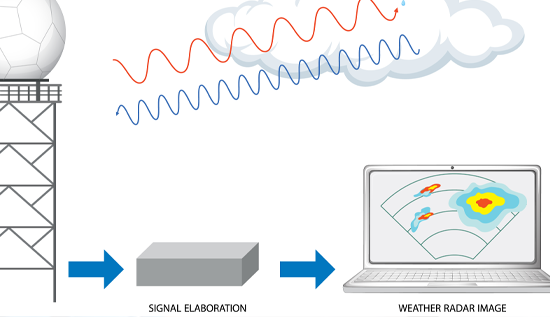Building a Strong IT Infrastructure for Sustainable Business Growth

Discover why a strong IT infrastructure is essential for business growth. Learn how Loma Technology can help build scalable, secure, and efficient systems.
In current digital age, all businesses are relied heavily on technology to grow and compete. A strong IT infrastructure is critical to this technological revolution, providing as the cornerstone for current businesses.
As companies embrace digital transformation, a well-designed IT infrastructure becomes critical. It supports critical corporate operations, simplifies collaboration, and enables data-driven decision-making. The quality of IT systems affects firms of all sizes' capacity to scale and innovate.
This guide explores the important of IT infrastructure in business growth and components, and best practices for optimization. It provides useful insights for business leaders and IT workers navigating the rapidly changing landscape of enterprise technology.
What is IT Infrastructure for a Company?
Before going deep into article, we have to know the meaning of What is IT infrastructure for a Company? The IT infrastructure is the collection of physical and virtual resources that allow an organization to run efficiently. It consists of hardware such as servers and storage devices, software that runs various applications, networking components that permit connection, and data centers that store and handle massive amounts of data. These aspects create the foundation for all digital operations and interactions.
The Building Blocks of IT Infrastructure
To really grasp the scope of IT infrastructure, it is necessary to break down to 7 components of IT infrastructure:
- Data Centers: These centralized facilities store important IT systems and associated components, creating a safe and controlled environment for data storage and processing.
- Hardware: It includes physical items like computers, mobile devices, servers and networking equipment on which make up the tangible layer of an organization's IT infrastructure.
- Management Tools: Software and techniques that allow IT departments to monitor, maintain, and optimize the complete infrastructure environment.
- Software: The IT infrastructure’s software layer includes operating systems, apps, and middleware, which allow users to perform activities and manage data.
- Security Systems: Firewalls, intrusion detection systems, and encryption tools protect an organization's digital assets against cyberattacks.
- Cloud Services: Businesses are increasingly using cloud computing platforms to supplement or replace traditional on-premises infrastructure, which provides scalability and flexibility.
- Network Resources: The interconnected web of communication channels, which includes local area networks (LANs), wide area networks (WANs), and internet access, serves as the foundation for data transmission.
These 7 components of IT infrastructure work together to help businesses run their digital activities more efficiently, securely, and reliably.
Why IT Infrastructure is Essential for Business Growth
In the competitive of current’s marketplace, an IT infrastructure enables organizations to increase productivity, innovate and make data-driven decisions. A strong IT ecosystem provides a significant competitive advantage by allowing for scalability, cost-efficiency, and security, all while ensuring operational reliability.
Scalability: As businesses grow, a scalable IT infrastructure allows for the seamless integration of new technologies and expansion without affecting operations. Scalability, whether achieved by expanding servers, increasing storage, or leveraging cloud services, enables businesses to adapt and grow at their own speed.
Cost-Efficiency: Cloud-based solutions, such as Infrastructure as a Service (IaaS) and Software as a Service (SaaS), eliminate the need for significant initial expenditures in physical infrastructure. Businesses pay only for the resources they use, which reduces operational expenses and the need for frequent updates.
Security: With increasing cybersecurity threats, a secure IT infrastructure is critical. Strong security measures, including as firewalls, encryption, and intrusion detection, help to protect critical data and prevent costly breaches.
By concentrating on five critical areas, IT infrastructure in business can ensure their powerful driver of growth and innovation.
Key Components of a Resilient IT Infrastructure

Building an effective necessitates careful evaluation of the numerous IT infrastructure components that collaborate to meet an organization's technological requirements. Understanding about these fundamental characteristics is critical for developing a system capable of adapting to changing business requirements while retaining performance, security, and dependability.
Robust Server and Storage Solutions
Servers and storage devices that handle and store an organization's data are important to any IT architecture. Modern server solutions provide:
- High-performance computing capabilities can handle complex workloads.
- Virtualization technology for effective resource utilization.
- Scalable architectures that can grow with the business needs.
Storage solutions have evolved to include:
- High-capacity hard disks and solid-state drives for quick data access.
- Network-attached storage (NAS) and storage area networks (SAN) for centralized data management
- Object storage systems for managing unstructured data at scale.
Choosing the proper combination of server and storage technologies is critical to providing optimal performance and data accessibility throughout the organization.
Advanced Networking and Connectivity
A stable and high-performance network serves as the circulatory system of IT infrastructure, allowing for communication and data transfer between various components. Key concerns for networking include:
- Internal communication using high-speed local area networks (LANs).
- Wide area networks (WANs) can connect geographically disparate locations.
- Software-defined networking (SDN) provides greater flexibility and control.
- QoS methods are used to prioritize vital traffic.
Robust connectivity solutions guarantee that data flows effortlessly across the enterprise, facilitating collaboration and providing real-time access to crucial information.
Cloud Computing Integration
Cloud services are essential to modern IT infrastructure, giving organizations with the flexibility and scalability they want to remain competitive. The key components of cloud computing are:
- Infrastructure as a Service (IaaS): On-demand access to virtual computing resources such as servers and storage.
- Platform as a Service (PaaS): Provides a controlled environment, which makes app development and deployment easier.
- Software as a Service (SaaS): Delivers ready-to-use software for streamlining company processes.
By combining cloud services with existing on-premises systems, businesses may develop hybrid environments that provide the best of both worlds: control over sensitive data and cloud scalability.
Comprehensive Security Measures
In an era of growing cyber threats, strong security measures are critical for safeguarding an organization's digital assets. The key security components are:
- Next-generation firewalls and intrusion detection systems.
- Multi-factor authentication and access control systems.
- Encryption technologies for data at rest or in transit.
- SIEM tools for detecting and responding to threats.
A layered approach to security, which includes both preventive and investigative measures, is critical for protecting against a wide range of potential threats.
Data Backup & Recovery
An extensive disaster recovery strategy makes sure that those companies can recover from unforeseen data loss or system breakdowns. Regular data backups and effective recovery mechanisms help those companies avoid losing crucial date of information due to hardware problems, cyberattacks, or other disruptions.
About IT infrastructure examples such as cloud-based disaster recovery solutions and encrypted virtual private networks (VPNs) show how enterprises can improve their flexibility and security. These components enable businesses to recover rapidly from disruptions while safeguarding sensitive data.
End-User Computing and Mobility Solutions
Supporting the needs of a modern workforce necessitates an examination of end-user computing and mobility options. Key components are:
- Desktop and laptop computers with suitable software.
- Mobile devices and EMM solutions
- Virtual desktop infrastructure (VDI) provides flexible access to apps and data.
- Collaboration tools and platforms for distant work
These solutions ensure that employees have access to the resources they require to be productive, regardless of location or device.
Challenges of Poor IT Infrastructure
When a strong IT infrastructure can push on business growth and innovation, an insufficient or lacking managed system can become a serious problem. Understanding the possible problems and disadvantages of poor IT infrastructure is critical for businesses seeking to avoid costly interruptions and maintain a competitive advantage.
Performance Bottlenecks and Downtime
Inadequate infrastructure can cause frequent outages or slowdowns, resulting in severe productivity and revenue losses. Companies that rely on obsolete or insufficient technologies are more likely to face downtime, which frustrates both staff and consumers.
Security Vulnerabilities and Data Breaches
Without adequate security measures, firms are subject to data breaches, malware attacks, and other cybersecurity dangers. A weakened infrastructure raises the danger of sensitive information being compromised.
High Operational Costs
Over time, the expenditures of maintaining obsolete infrastructure may become unsustainable. Inefficiencies in hardware, software, and network configurations result in increased long-term expenses due to frequent repairs, upgrades, and replacements.
How Loma Technology Helps Build and Optimize IT Infrastructure
Loma Technology specializes in developing tailored IT infrastructure solutions that meet the unique needs of your company. We offer:
Custom Solutions
Every business has distinct infrastructural requirements. Whether you're updating storage solutions, increasing network capacity, or integrating cloud services, Loma Technology offers tailored solutions that scale with your organization.
Cybersecurity Services
We prioritize security by developing comprehensive cybersecurity methods to protect your critical information. From firewalls to advanced threat detection, our solutions protect your company from cyberattacks.
Cloud Integration
The team assists businesses in moving to cloud environments by implementing scalable and cost-effective cloud solutions. Whether you're considering IaaS, SaaS, or a hybrid cloud solution, this will take you to the entire process.
Conclusion
In today's fast expanding digital world, a strong and adaptable IT infrastructure is not only a technical requirement, but also a strategic advantage. Investing in scalable, secure, and efficient IT systems allows organizations to drive innovation, improve operations, and deliver great customer service.
To remain competitive, firms must constantly optimize their infrastructure and adopt future technologies such as edge computing and 5G. This will position them well for success in the future of business.
Discover: Digital Infrastructure Cambodia
FAQs: FREQUENTLY ASK QUESTIONS
What are the objectives of IT infrastructure?
The goals of IT infrastructure are about creating a dependable, secure, and scalable platform for business activities. It definitely sure that all systems, applications, and communications work smoothly, reducing downtime and security threats.
What is the role of IT infrastructure in an organization?
IT infrastructure enables all digital processes within a business, such as data management, communication, and application delivery. It ensures that internal processes and external services run smoothly, allowing the business to effectively fulfill its objectives.
Why is infrastructure significant?
Infrastructure is important since it is the foundation of a company's operations. Without it, firms would struggle to manage data, collaborate, or provide services efficiently, stifling growth and profitability.
Why is IT infrastructure important in business?
The reason of IT infrastructure important in business it cause of essential for scalability, operational efficiency, and data security. It allows organizations to respond on changing demands, enhance consumer experiences, and remain competitive in a technologically driven environment.
What is the importance of IT infrastructure management?
The importance of IT infrastructure management is to keep all smoothly of working’s system, minimizes downtime, and identifies potential threats. It allows organizations to maximize performance, extend the life of their equipment, and increase overall efficiency.
What is the purpose of IT infrastructure services?
The purpose of IT infrastructure services is about to give businesses with the technology, support, and resources they require to keep and optimize their infrastructure. These services guarantee the properly functioning of hardware, software, networks, and storage solutions.
What is the importance of IT infrastructure components?
On each IT infrastructure components, from servers to networking equipment is crucial to corporate operations. About these components work together to allow for data processing, secure communication, and smooth application management, all of those which are critical to the success of any firm. On IT infrastructure examples include cloud storage, virtual servers, and on-site networking equipment all work together to increase operational efficiency.
More Articles
 20 Nov 2025
20 Nov 2025
GraphQL vs REST: Next-Gen API Trends for Developers
Compare GraphQL vs REST to optimize API performance, scalability and modern application design with best practices for developers.
 20 Nov 2025
20 Nov 2025
Neural Network Programming Beyond Python: Rust & C++
Experience neural network programming beyond Python, powered by Rust and C++ ecosystems built for speed, safety, and large-scale deployment.
 19 Nov 2025
19 Nov 2025
Swarm Robotics in Agriculture & Logistics: Smart Automation
Swarm Robotics in Agriculture & Logistics enhances automation, efficiency, and smart coordination across modern farming and logistics operations.
 19 Nov 2025
19 Nov 2025
Ultra-Low Latency Networks for VR/AR: Optimized Performance
🚀 Discover how Ultra-Low Latency Networks for VR/AR are transforming real-time experiences with 5G, edge computing, and seamless data transmission.